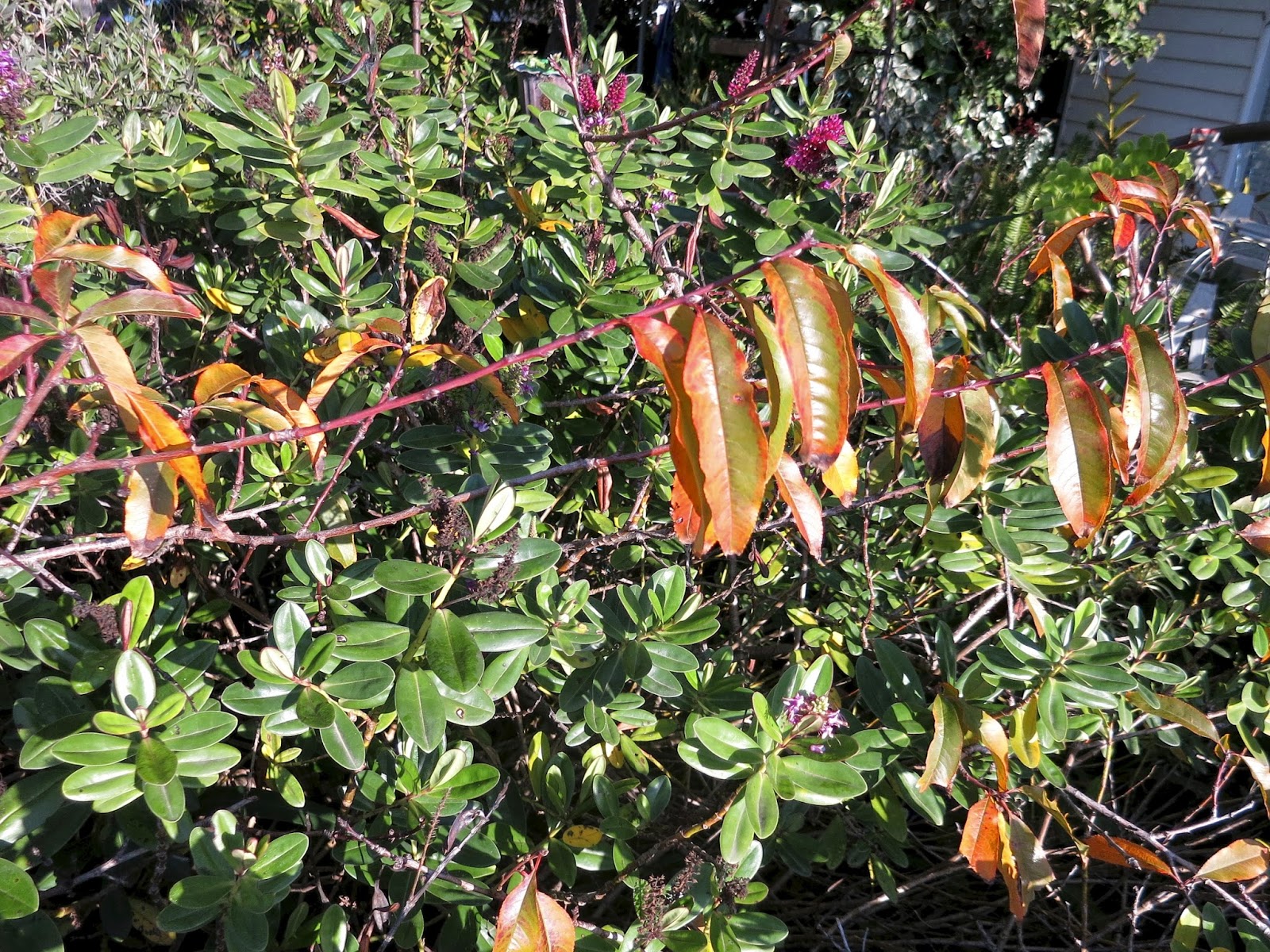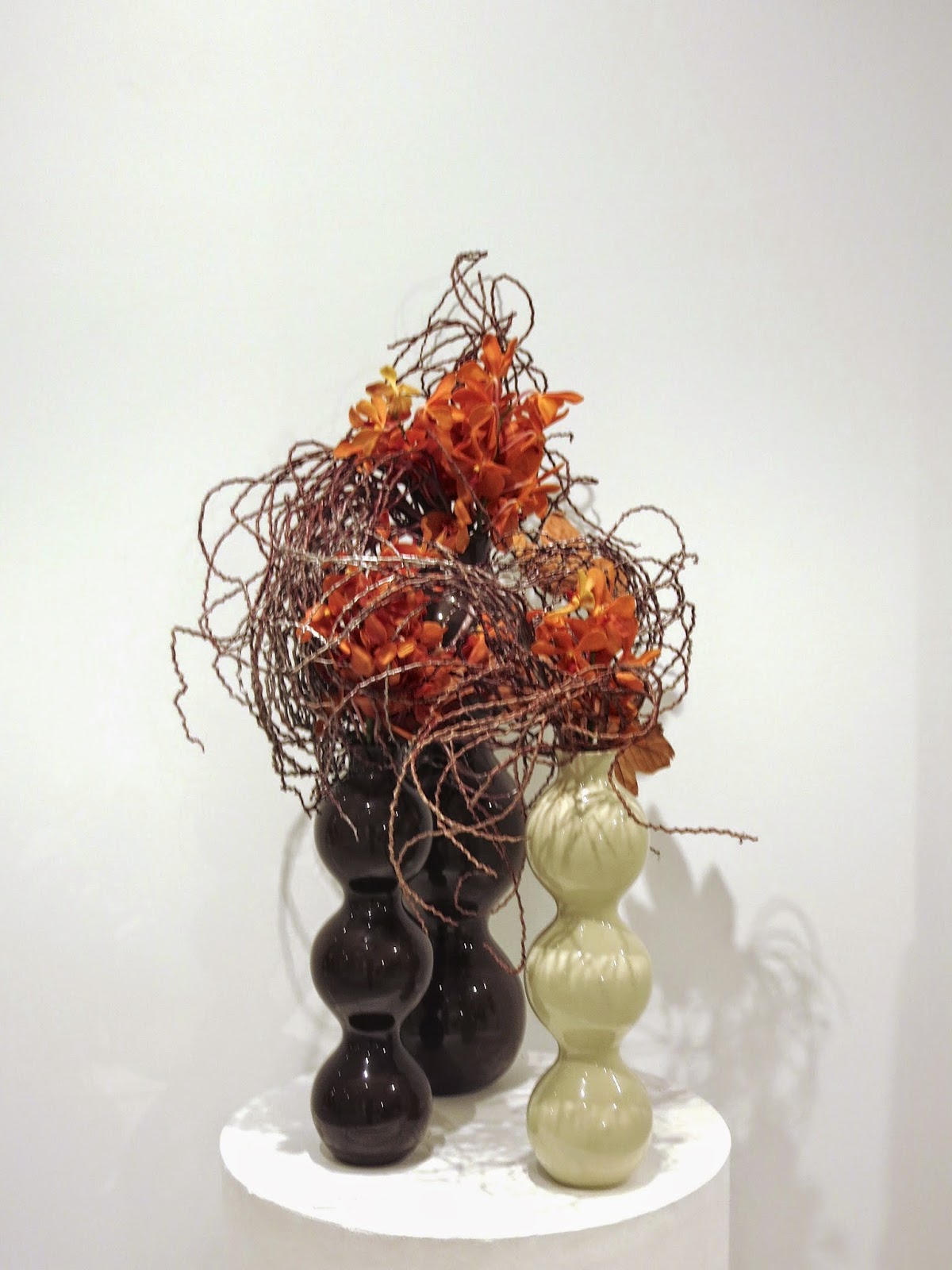Below is a photo of a sculpture by Sofu Teshigahara. I believe it was brought by him to Australia on his visit in 1967 along with a number of similar sculptures. It is made of carved cypress and covered with aluminium sheeting. I have been told that a number of these small sculptures were stacked vertically together to make a larger work at that time. During his visit he also presented a very large sculpture to Canberra's National Capital Development Commission, as reported in The Canberra Times, 27th September 1967.
A further search has revealed the same sculpture being used in advertising for Norman Sparnon's second tour to North America in early 1982. If you look closely you can see it is on the righthand side of two sculptures set on the sea wall with the Sydney Opera House in the background.
I have used the same sculpture in this year's 50th anniversary exhibition of the Victorian Branch of the Sogetsu School of Ikebana. In keeping with the theme of 'Autumn in Melbourne' I have added the dried heads of sunflowers that I grew last year and two stems of rose-hips.
The exhibition has been a great success with 901 visitors to the beautiful and strikingly modern Yarra Gallery in Federation Square in the heart of Melbourne. I have posted a slideshow of the exhibition on the Victorian Branch website. Click on the coloured text and then go to Members Exhibition 2014 to view them: Autumn in Melbourne.
Greetings from Christopher
31st May 2014.
Don't forget to check Emily Karanikolopoulos blog. (Click on coloured text to link to Emily Karanikolopoulos' Tokyo blog)






















































































































